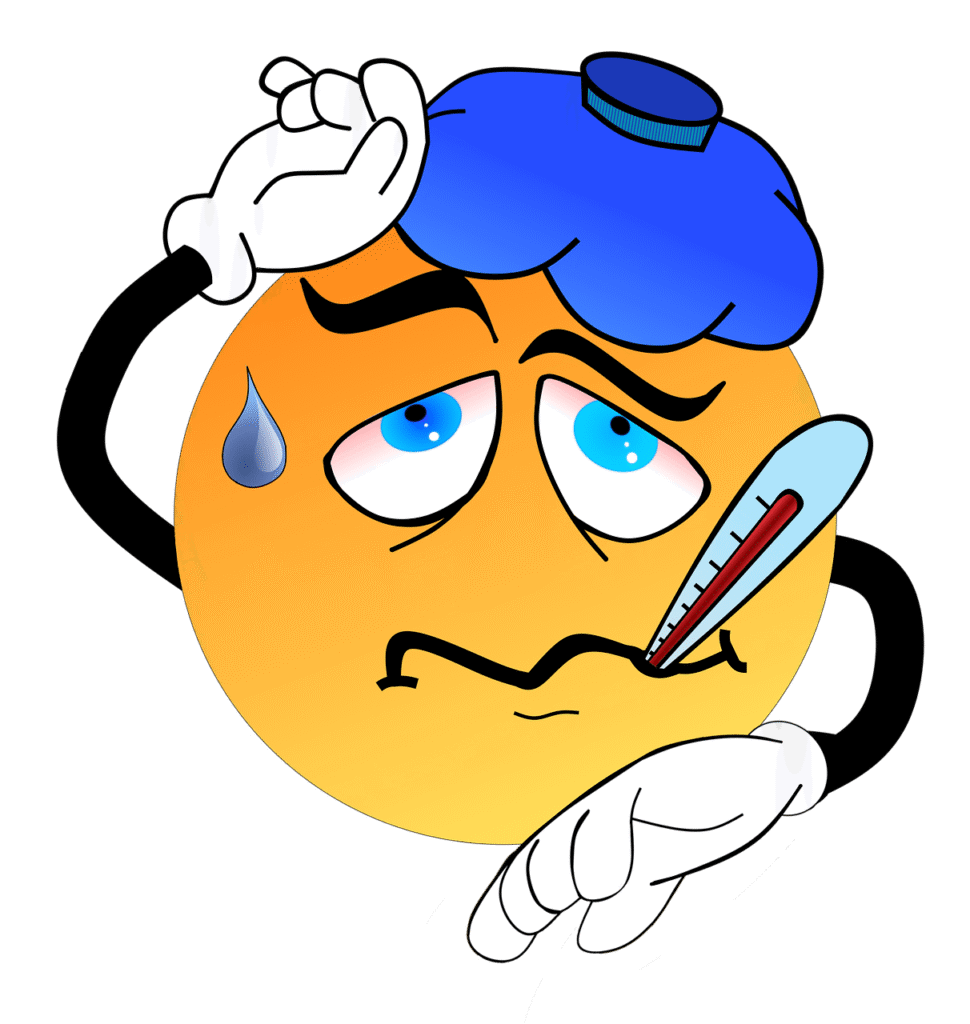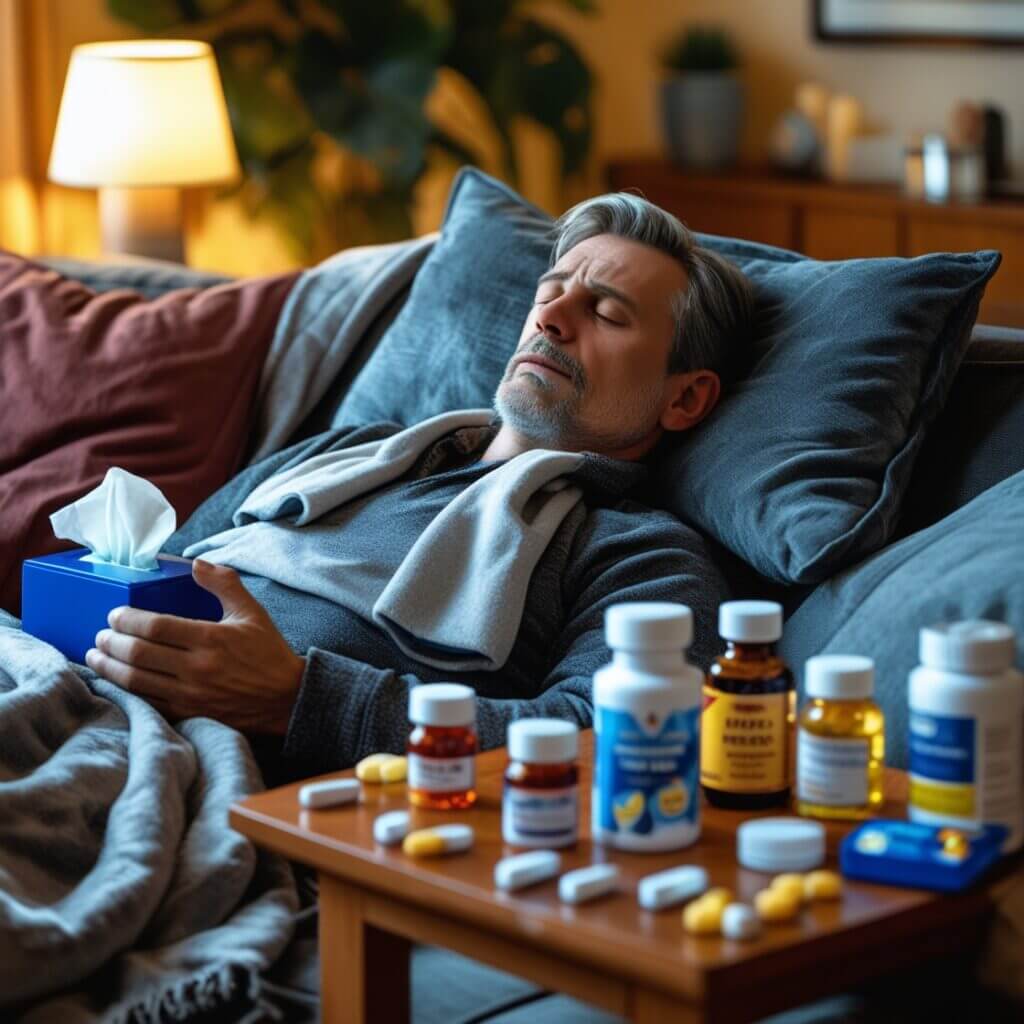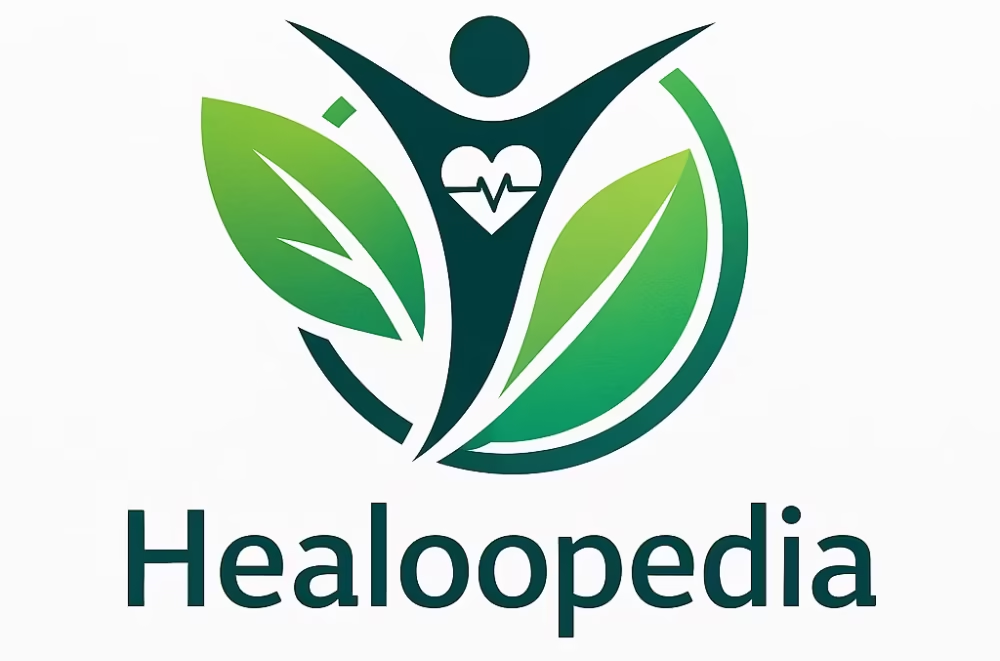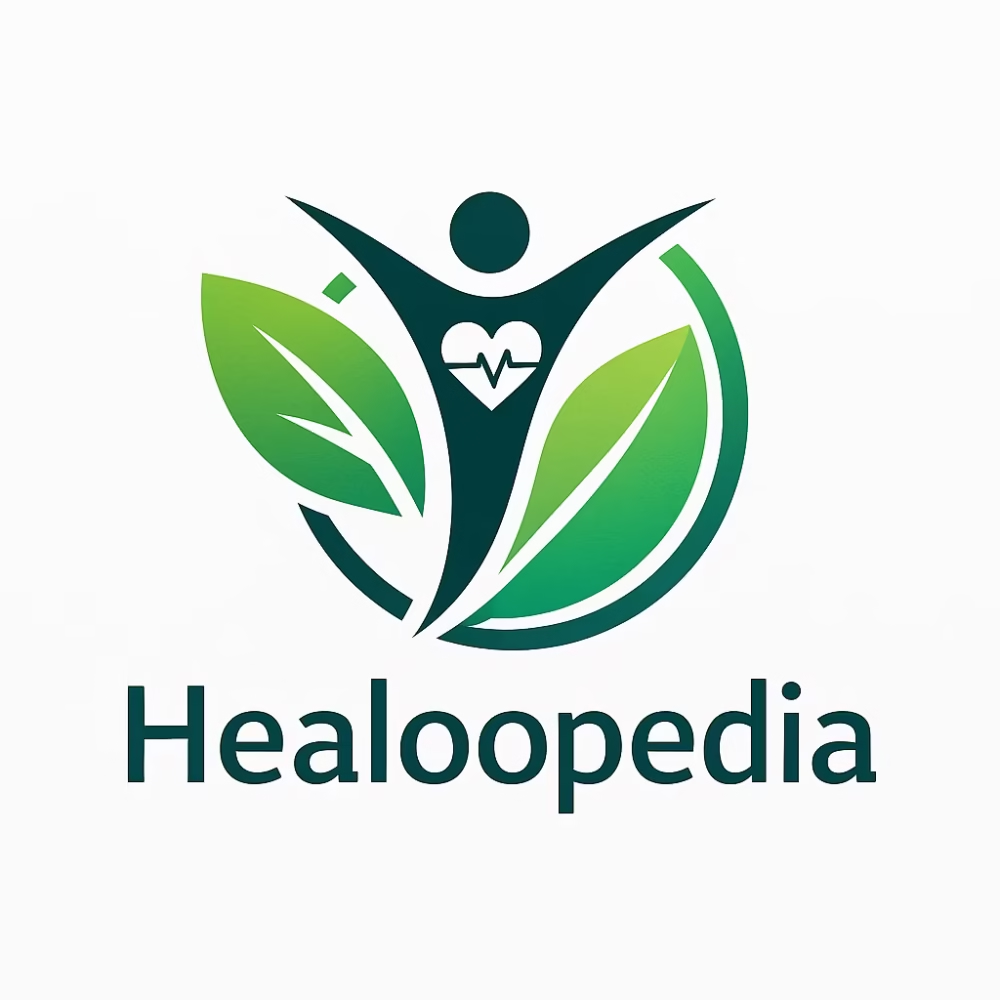Table of Contents
Cold and Flu Medicine: Know the Illness to Treat It Right
As temperatures drop, sniffles, coughs, and body aches often rise—ushering in the season of viral infections. Whether you’re battling a mild cold or knocked down by the flu, the right cold and flu medicine can make a world of difference. But choosing the right remedy starts with understanding what you’re dealing with.
Cold vs. Flu: The Key Differences
Before reaching for a bottle of cold and flu medicine, it’s important to distinguish between these two common ailments—because they aren’t quite the same.
What Is a Cold?
The common cold is a mild viral infection targeting the upper respiratory tract, mainly the nose and throat. While it’s uncomfortable, it usually passes on its own in a few days.
Typical cold symptoms include:
- Sneezing
- Stuffy or runny nose
- Sore throat
- Mild cough
- Head pressure or mild headache
What Is the Flu?
The flu, short for influenza, is a more aggressive respiratory virus. It can come on quickly and cause more intense symptoms, sometimes requiring medical attention.
Common flu symptoms include:
- High fever
- Chills and shivering
- Intense body aches
- Persistent fatigue
- Dry, hacking cough
- Severe headache
Recognizing whether you have a cold or the flu is the first step toward effective treatment. With the right cold and flu medicine, you can target specific symptoms and recover faster—safely and efficiently.

Key Ingredients in Cold and Flu Medicine
,Choosing the right cold and flu medicine starts with understanding what’s inside the bottle. Different active ingredients target different symptoms—knowing their roles can help you treat your illness more effectively and safely.
1. Acetaminophen (Paracetamol)
This widely used pain reliever and fever reducer is gentle on the stomach and found in many combination cold and flu medicine products like Tylenol. It’s ideal for managing body aches, headaches, and fever.
2. Ibuprofen
As an anti-inflammatory drug, ibuprofen helps reduce pain, swelling, and fever. Often found in Advil or Motrin, it’s especially effective for sinus pressure and sore throat caused by inflammation.
3. Dextromethorphan
A common cough suppressant that calms dry, non-productive coughs. It acts on the brain’s cough center and is found in many over-the-counter cold and flu medicines labeled for cough relief.
4. Guaifenesin
This expectorant helps loosen thick mucus in the chest, making coughs more productive. It’s a key ingredient in medications like Mucinex and helps ease chest congestion.
5. Phenylephrine & Pseudoephedrine
Both are nasal decongestants that relieve a stuffy nose by shrinking swollen nasal passages. Pseudoephedrine is stronger but is regulated due to its potential misuse, while phenylephrine is more readily available in OTC cold and flu medicines.
6. Diphenhydramine & Chlorpheniramine
These are first-generation antihistamines used to reduce sneezing, runny nose, and watery eyes. While effective, they may cause drowsiness, which is helpful at night but undesirable during the day.
Tip: Always check labels when using combination products to avoid doubling up on the same active ingredients and risking overdose.
How Your Immune System Helps Cold and Flu Medicine Work
While cold and flu medicine eases discomfort, your immune system is doing the heavy lifting behind the scenes. Understanding this natural defense system helps you make smarter choices about treatment and prevention.
Innate Immunity
This is your body’s first response, made up of physical barriers like your skin and immune cells that rapidly attack invading viruses.
Adaptive Immunity
A more specialized system that develops over time, recognizing and remembering viruses like influenza to fight them off more efficiently in the future.
Support Your Immune System Naturally:
- Drink plenty of fluids to stay hydrated
- Eat a nutrient-dense diet, especially rich in vitamins C and D
- Get 7–9 hours of quality sleep
- Exercise moderately to keep your system resilient
Cold and flu medicine helps control symptoms, but a strong immune system ensures faster recovery and long-term defense.ng work.
Common Myths and Truths About Cold and Flu Medicine
There’s a lot of misinformation surrounding cold and flu treatment. Let’s debunk some of the most common myths.
Myth 1: Antibiotics Cure the Cold or Flu
Fact: Antibiotics work against bacteria, not viruses. Colds and the flu are viral illnesses, so antibiotics are ineffective unless a secondary bacterial infection is present.
Myth 2: All Flu Medicines Cause Drowsiness
Fact: Many products are labeled “non-drowsy.” Drowsiness depends on the ingredients, such as first-generation antihistamines.
Myth 3: Taking More Medicine Will Help You Get Better Faster
Fact: Overdosing can be harmful and won’t speed up recovery. Follow recommended dosages.
Myth 4: Natural Remedies Are Always Safe
Fact: Some natural products can interact with medications or cause side effects. Use them wisely and consult a healthcare provider.

Different Kinds of Cold and Flu Medicine
When you’re battling a cold or the flu, it’s not just about taking any medication’s about taking the right one. Cold and flu medicine is available in various forms, each targeting specific symptoms. Understanding these categories helps you treat your illness more effectively while avoiding unnecessary or overlapping drugs.
1. Decongestants: Breathe Easier Fast
Decongestants are designed to relieve nasal stuffiness by shrinking the swollen blood vessels in the nasal passages.
Common Decongestants:
- Pseudoephedrine (found in Sudafed): Highly effective but regulated due to potential misuse.
- Phenylephrine: Common in many OTC options but slightly less potent.
Available Forms:
- Oral tablets and capsules
- Nasal sprays
- Liquid formulations
Caution: Use nasal sprays like oxymetazoline or phenylephrine for no more than 3 consecutive days. Longer use can lead to rebound congestion.
2. Antihistamines: Stop the Sneezes and Drips
Though originally designed for allergies, many first-generation antihistamines are now used in cold and flu medicine to control sneezing, watery eyes, and runny noses.
Examples:
- Diphenhydramine (Benadryl): Effective but can cause drowsiness.
- Chlorpheniramine: Often included in multi-symptom cold remedies.
Some second-generation antihistamines like loratadine (Claritin) may also help without the sedative effects.
3. Pain Relievers and Fever Reducers: Tame the Aches
These are the backbone of many cold and flu medicines, helping to reduce fever and ease body aches and headaches.
Most Common Options:
- Acetaminophen (Tylenol): Gentle on the stomach and effective at reducing fever.
- Ibuprofen (Advil, Motrin): Adds anti-inflammatory effects, great for sore throat and sinus pressure.
Note: Always stick to recommended dosages to prevent liver toxicity (acetaminophen) or kidney irritation and stomach upset (ibuprofen).
4. Cough Suppressants: Calm That Dry Hack
When a persistent, dry cough keeps you up at night or disrupts your day, a cough suppressant can help silence it.
Key Ingredient:
- Dextromethorphan: Common in products labeled as “DM” (e.g., Robitussin DM)
This active compound works on the brain’s cough center to reduce the urge to cough, making it ideal for dry, tickling throat irritation.
5. Expectorants: Break Up Mucus
If your cough is “wet” or chesty, you need an expectorant to loosen mucus and make coughing more productive.
Main Ingredient:
- Guaifenesin (found in Mucinex)
It thins mucus, making it easier to expel and helping clear your airways more effectively.
6. Combination Cold and Flu Medicine: All-in-One Relief
For those experiencing multiple symptoms — such as fever, nasal congestion, and cough — combination products offer a convenient solution.
Popular Combination Cold and Flu Medicines:
- NyQuil (nighttime relief with added sedatives)
- DayQuil (non-drowsy for daytime)
- Theraflu
- Alka-Seltzer Plus
Pro Tip: Always read the ingredient list. Many combination medications contain overlapping drugs like acetaminophen or dextromethorphan. Doubling up can lead to accidental overdose.
How to Pick the Best Cold and Flu Medicine
With the vast range of options available at pharmacies, selecting the most effective cold and flu medicine boils down to identifying your key symptoms.
| Symptom | Recommended Treatment |
|---|---|
| Stuffy nose | Decongestant like pseudoephedrine or saline spray |
| Runny nose, sneezing | Antihistamine such as diphenhydramine or loratadine |
| Fever, headaches, body aches | Acetaminophen or ibuprofen |
| Dry cough | Cough suppressant (dextromethorphan) |
| Wet, mucus-producing cough | Expectorant (guaifenesin) |
| Multiple symptoms | Multi-symptom combination product (NyQuil, Theraflu, etc.) |
Quick Tip: Choose a product that addresses only the symptoms you have. Avoid multi-symptom meds if you don’t need all the included treatments.
This strategic approach not only improves symptom relief but also minimizes side effects and avoids interactions between overlapping ingredients.s.

Cold and Flu Medicine for Kids
When children catch a cold or the flu, it’s essential to approach treatment with extra caution. Not all cold and flu medicine is appropriate for kids, especially infants and toddlers. Safe use starts with understanding age guidelines and choosing formulations designed specifically for children.
Important Guidelines:
- Never give over-the-counter cold and flu medicine to children under 2 years unless directed by a pediatrician.
- Always opt for pediatric-specific formulations to ensure appropriate dosages.
- Use a dosing syringe or cup — not a kitchen spoon — for accuracy.
- Read the label carefully and follow age-based dosage instructions.
Pediatric-Friendly Cold and Flu Medicine Options:
- Infant Tylenol (acetaminophen): For fever and mild pain relief.
- Children’s Motrin (ibuprofen): Helps reduce inflammation, fever, and body aches.
- Children’s Mucinex (guaifenesin): An expectorant to loosen mucus in older children.
Always consult a pediatrician before giving your child any cold and flu medicine, especially if they have underlying health conditions or are taking other medications.
Natural and Home Remedies for Cold and Flu: Gentle Healing at Home
In addition to conventional cold and flu medicine, many families turn to natural remedies for soothing relief. While they don’t cure viral infections, these remedies can ease symptoms and support the body’s healing process.
Top Natural Remedies:
- Honey with Warm Water or Tea
- Calms sore throats and quiets nighttime coughing.
- Not recommended for children under 1 year old.
- Steam Inhalation
- Helps loosen mucus and relieve nasal congestion.
- Add eucalyptus or peppermint oil for extra relief.
- Salt Water Gargle
- Reduces throat inflammation and discomfort.
- Ginger Tea
- Soothes sore throat, nausea, and provides anti-inflammatory effects.
- Vitamin C and Zinc
- These immune-supporting nutrients may help shorten cold duration when taken at the first sign of symptoms.
Natural remedies are generally safe and can complement cold and flu medicine to provide more holistic relief.
Prescription Medicines for the Flu
Sometimes, the flu hits harder than expected. If symptoms are intense or you’re in a high-risk group, your doctor may recommend antiviral prescription cold and flu medicine to reduce severity and duration.
Common Antiviral Medications:
- Oseltamivir (Tamiflu): Oral capsule or liquid
- Zanamivir (Relenza): Inhaled medication
- Baloxavir marboxil (Xofluza): Single-dose antiviral pill
Best results occur when taken within 48 hours of symptom onset. These drugs may also help prevent complications in vulnerable patients.
Ideal for older adults, those with chronic conditions, or anyone with severe flu symptoms.
Safety Tips for Using Cold and Flu Medicine
Though widely available and generally safe, improper use of cold and flu medicine can lead to serious health issues. Follow these key precautions:
1. Always Read the Label
- Check for active ingredients and recommended dosages.
- Avoid products that combine the same ingredient in multiple forms.
2. Don’t Double Up
- Taking two medications with acetaminophen, for instance, can lead to liver damage.
- Know the difference between single and combination medications.
3. Watch for Interactions
- Cold and flu medicines can interact with blood pressure meds, antidepressants, or blood thinners.
- Talk to your doctor or pharmacist before combining medications.
4. Monitor Side Effects
- Common side effects include drowsiness, dizziness, upset stomach, and dry mouth.
- If you feel unusually sleepy or confused, stop use and seek medical advice.
5. Avoid Alcohol
- Alcohol can worsen side effects and increase toxicity, especially with sedating medicines and acetaminophen.
When to See a Doctor: Don’t Ignore These Symptoms
Most colds and mild flu cases resolve within 7 to 10 days. But there are times when home remedies and over-the-counter cold and flu medicine aren’t enough.
Seek medical care if:
- Symptoms last longer than 10 days
- High fever persists for more than 3 days
- You have trouble breathing or chest pain
- You see white patches in your throat (could indicate strep)
- You’re elderly, pregnant, or have a weakened immune system
Prompt medical attention can prevent complications like pneumonia, bronchitis, or sinus infections.
Top Tips to Prevent Cold and Flu
Prevention is the most powerful tool in your health arsenal. Here’s how to reduce your risk of catching or spreading viruses:
1. Wash Hands Regularly
- Use soap and water for at least 20 seconds.
- Carry hand sanitizer for use on the go.
2. Avoid Close Contact
- Limit time spent around sick individuals.
- Stay home when you’re ill to avoid spreading infection.
3. Strengthen Your Immune System
- Eat a diet rich in fruits, vegetables, and whole grains.
- Exercise regularly and get 7–8 hours of sleep nightly.
4. Get Vaccinated
- Annual flu shots can reduce your chances of severe illness.
- Vaccination is especially important for children, seniors, and healthcare workers.
5. Disinfect Frequently Touched Surfaces
Clean doorknobs, phones, keyboards, and light switches regularly.y.

Frequently Asked Questions About Cold and Flu Medicine
Q1: Can I take cold and flu medicine on an empty stomach?
Some cold and flu medications, particularly pain relievers like ibuprofen, may cause stomach irritation when taken without food. To avoid discomfort, it’s best to take them with a light meal or snack. Always follow the instructions on the packaging or consult your pharmacist for guidance.
Q2: Can I give adult cold medicine to a child if I reduce the dosage?
No, this is not safe. Children have different metabolic rates and sensitivities. Always use cold and flu medicine formulated specifically for pediatric use, and follow the recommended dosage for your child’s age and weight.
Q3: What’s the difference between DayQuil and NyQuil?
DayQuil is designed for daytime relief and typically contains non-drowsy ingredients, allowing you to stay active. NyQuil, on the other hand, includes sedating components like antihistamines to help you rest at night while relieving symptoms.
Q4: Are any cold and flu medicines safe during pregnancy?
Acetaminophen is generally considered safe for pregnant women, but many cold and flu medicines contain multiple ingredients that may not be suitable. Always consult your OB-GYN before taking any over-the-counter medications during pregnancy.
Q5: Is it safe to take cold and flu medicine daily?
These medicines are meant for short-term symptom relief, typically 3–5 days. Prolonged or daily use can increase the risk of side effects, liver damage, or medication overuse. If symptoms persist, consult your doctor.
Q6: Can I combine cold and flu medicine with my prescription drugs?
Some over-the-counter cold and flu products can interact with prescription medications, especially antidepressants, blood pressure drugs, or anticoagulants. To avoid harmful interactions, always check with your healthcare provider.
Q7: How quickly does cold and flu medicine start working?
Most cold and flu medicines begin to relieve symptoms within 30 minutes to an hour. However, effectiveness may vary based on the type of medication, your body’s response, and how early treatment begins.
Q8: Is it safe to use nasal sprays alongside oral cold and flu medications?
Yes, as long as the products do not contain duplicate active ingredients. Nasal decongestant sprays should only be used for up to three consecutive days to avoid rebound congestion.
Q9: What cold and flu medicine is best for a sore throat?
For throat pain, try lozenges, throat sprays, or oral pain relievers like acetaminophen. Herbal teas with honey and ginger can also provide soothing, natural relief.
Q10: Are natural remedies as effective as cold and flu medicine?
Natural remedies can help alleviate mild symptoms and support recovery, but they usually aren’t as fast-acting or potent as pharmaceutical medicines. For best results, consider combining both approaches with professional guidance.
Q11: Do I need a prescription for cold and flu medicine?
Most cold and flu treatments, including decongestants and pain relievers, are available over the counter. Prescription antivirals like Tamiflu are only given under a doctor’s recommendation when flu symptoms are severe or high-risk.
Q12: Should I stop taking cold and flu medicine when I start to feel better?
If the medicine is part of a prescribed regimen, complete the full course. For over-the-counter options, you can stop once your symptoms are fully relieved. However, avoid stopping prematurely if the medication is managing ongoing symptoms like fever or body aches.
Q13: Can cold and flu medicine cause drowsiness?
Yes. Medications with first-generation antihistamines like diphenhydramine often cause drowsiness. Always read the label and avoid driving or operating machinery if you feel sedated.
Q14: Is cold and flu medicine safe for people with high blood pressure?
Some decongestants, such as pseudoephedrine, may raise blood pressure. Look for “HBP” (high blood pressure)-friendly cold medicines or consult your doctor for safer alternatives.
Q15: Can I drive after taking cold and flu medicine?
That depends on the product. Some formulas, particularly those for nighttime use, can cause drowsiness. Check the label for warnings before driving or engaging in activities that require full attention.
Cold and Flu Medicine: Relief with Responsibility
Navigating cold and flu season doesn’t have to be overwhelming. With a wide variety of cold and flu medicine options available today—ranging from decongestants and antihistamines to cough suppressants and fever reducers—it’s easier than ever to manage your symptoms and feel better fast. However, these medications are not one-size-fits-all.
It’s vital to:
- Choose the right medicine for your specific symptoms.
- Understand the active ingredients.
- Avoid drug interactions and overdosing.
- Follow safe use guidelines based on age, health status, and other ongoing medications.
While medicine can bring quick relief, rest, hydration, and proper nutrition play a crucial role in recovery. Don’t ignore persistent or severe symptoms, and always consult a healthcare provider for personalized treatment—especially when treating children, pregnant women, or individuals with chronic health conditions.
By staying informed, making thoughtful choices, and listening to your body, you can take control of your health and make cold and flu season more manageable than ever.
Also read This






Great content! Super high-quality! Keep it up! http://www.kayswell.com
Your articles are extremely helpful to me. May I ask for more information? http://www.kayswell.com
Thank you for providing me with these article examples. May I ask you a question? http://www.kayswell.com
Thank you for writing this article. I appreciate the subject too. http://www.kayswell.com
Thank you for writing this post. I like the subject too. http://www.kayswell.com
May I request more information on the subject? http://www.kayswell.com All of your articles are extremely useful to me. Thank you!
I want to thank you for your assistance and this post. It’s been great. http://www.kayswell.com
Good post made here. One thing I’d like to say is always that most professional domains consider the Bachelor’s Degree as the entry level requirement for an online college degree. When Associate College diplomas are a great way to begin, completing a person’s Bachelors reveals many opportunities to various careers, there are numerous online Bachelor Course Programs available coming from institutions like The University of Phoenix, Intercontinental University Online and Kaplan. Another concern is that many brick and mortar institutions present Online variants of their certifications but normally for a drastically higher cost than the firms that specialize in online course programs.
Your articles are very helpful to me. May I request more information? http://www.kayswell.com
I do not even know how I stopped up right here, but I assumed this publish was once good. I don’t understand who you might be but definitely you’re going to a famous blogger if you aren’t already 😉 Cheers!
You helped me a lot with this post. http://www.kayswell.com I love the subject and I hope you continue to write excellent articles like this.
Can you write more about it? Your articles are always helpful to me. Thank you!
I enjoyed reading your piece and it provided me with a lot of value. http://www.kayswell.com
Great beat ! I would like to apprentice while you amend your web site, http://www.kayswell.com how could i subscribe for a blog site? The account helped me a acceptable deal. I had been a little bit acquainted of this your broadcast provided bright clear concept
Thank you for your help and this post. It’s been great. http://www.kayswell.com
Thank you for providing me with these article examples. May I ask you a question? http://www.kayswell.com
It’s impressive that you are getting thoughts from this piece of writing as well as from our argument made at this time.
I love your blog.. very nice colors & theme. Did you create this website yourself? Plz reply back as I’m looking to create my own blog and would like to know wheere u got this from. thanks
Superb post however , I was wanting to know if you could write a litte more on this subject? I’d be very grateful if you could elaborate a little bit further. http://www.kayswell.com
It’s actually very complex in this busy life to listen news on TV, so I just use world wide web for that reason, and get the newest news. http://www.kayswell.com
Great post. I was checking constantly this blog and I am impressed! Extremely useful information specifically the last part 🙂 I care for such information a lot. I was seeking this certain info for a long time. Thank you and good luck.
You’re so interesting! I don’t suppose I have read something like this before. So nice to discover another person with a few genuine thoughts on this subject. Seriously.. many thanks for starting this up. This web site is something that’s needed on the web, someone with a little originality!
Hello, i read your blog occasionally and i own a similar one and i was just curious if you get a lot of spam feedback? If so how do you stop it, any plugin or anything you can recommend? I get so much lately it’s driving me insane so any help is very much appreciated. http://www.kayswell.com
Hello there, You’ve done a great job. I will definitely digg it and personally recommend to my friends. I am confident they will be benefited from this website. http://www.kayswell.com
Very nice post. I just stumbled upon your weblog and wished to say that I’ve really enjoyed browsing your blog posts. After all I’ll be subscribing to your feed and I hope you write again soon! http://www.kayswell.com
I am really impressed with your writing skills as well as with the layout on your blog. Is this a paid theme or did you modify it yourself? Anyway keep up the nice quality writing, it is rare to see a nice blog like this one nowadays. http://www.kayswell.com
That is a very good tip especially to those new to the blogosphere. Short but very accurate information… Many thanks for sharing this one. A must read article! http://www.kayswell.com
That is a very good tip especially to those new to the blogosphere. Short but very accurate information… Many thanks for sharing this one. A must read article! http://www.kayswell.com
I really like your blog.. very nice colors & theme. Did you create this website yourself or did you hire someone to do it for you? Plz reply as I’m looking to design my own blog and would like to find out where u got this from. many thanks
I like this website so much, saved to fav.
Thank you for the sensible critique. Me & my neighbor were just preparing to do a little research on this. We got a grab a book from our area library but I think I learned more from this post. I’m very glad to see such great information being shared freely out there.
Enjoyed examining this, very good stuff, appreciate it.
WONDERFUL Post.thanks for share..extra wait .. …
Very nice post. I just stumbled upon your weblog and wished to say that I’ve really enjoyed browsing your blog posts. In any case I will be subscribing to your feed and I hope you write again soon!
After study a number of of the blog posts in your web site now, and I actually like your manner of blogging. I bookmarked it to my bookmark web site listing and will be checking again soon. Pls check out my website online as well and let me know what you think.
Thank you for sharing excellent informations. Your website is so cool. I’m impressed by the details that you’ve on this website. It reveals how nicely you perceive this subject. Bookmarked this website page, will come back for extra articles. You, my pal, ROCK! I found simply the information I already searched all over the place and simply couldn’t come across. What a perfect site.
I love your blog.. very nice colors & theme. Did you design this website yourself or did you hire someone to do it for you? Plz respond as I’m looking to create my own blog and would like to find out where u got this from. appreciate it
Hello! I just would like to give a huge thumbs up for the great info you have here on this post. I will be coming back to your blog for more soon.
Pretty! This was a really wonderful post. Thank you for your provided information.
Thanks for another informative website. Where else could I get that type of info written in such an ideal way? I have a project that I am just now working on, and I’ve been on the look out for such information.
wonderful post, very informative. I wonder why the other specialists of this sector don’t notice this. You must continue your writing. I’m sure, you’ve a huge readers’ base already!
Hey there! Someone in my Facebook group shared this site with us so I came to look it over. I’m definitely loving the information. I’m book-marking and will be tweeting this to my followers! Terrific blog and superb design and style.
I like this web site its a master peace ! Glad I found this on google .
I believe other website owners should take this web site as an model, very clean and wonderful user genial layout.
Just found out about jojobet5669. Looking for something fresh to try. Gonna sign up and deposit, so let’s win big like real ballers! Check It Out: jojobet5669.
Hey, y999gamelogin looks like a solid place to get my game on! I’m checking it out. I hope it’s packed with awesome games! Check it out y999gamelogin